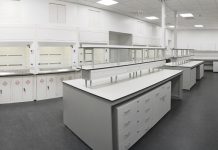These case studies were selected from the report ‘Making the best better – efficiency and effectiveness in higher education’, produced by Sarah Jackson of the N8 Research Partnership on secondment to BIS.
Universities are keen to drive productive efficiencies. Essentially, this means getting higher quality or more volume for the same, or less, input. By increasing their effectiveness in this way, universities are able to reinvest the savings they make to improve student services and support their research activities.
These examples show how universities have achieved efficiencies by increasing equipment utilisation, making smart use of digital technologies for cataloguing equipment and sharing high performance computing power.
Case studies
Sharing equipment and facilities – Oxford University
The University of Oxford has carried out a range of initiatives to increase the intensity of research equipment and facilities use. The project aimed to stimulate new approaches to support new science and greater utilisation of facilities across the world-class research base, helping to reduce costs and share scarce resources.
“EPSRC Delivery Plan funding plus local resources and ingenuity have led to better access to equipment, more intensive use, lower unit costs and bring in external users. We also see exciting science made possible through new collaborations and enhanced facilities.”
Dr Glenn Swafford, Director of Research Services
Kit-Catalogue® – Loughborough University
Loughborough University’s Kit-Catalogue® is an open source online system that can help any organisation effectively catalogue, record and locate its kit, such as laboratory equipment, workshop machines, ICT and specialist tools. The system reduces the costly duplication and double purchasing of equipment and facilitates research collaboration.
“We have been delighted by the amount of interest in Kit-Catalogue® from diverse groups of people, from research groups, RCUK, purchasing and asset management staff, and other HE institutions in the UK and overseas.” Professor Rachel Thomson, Director of the Materials Research School
High performance computing – N8 Research Partnership
Eight universities in the N8 Research Partnership are sharing a High Performance Computing (HPC) facility – a larger and higher specification machine than could be afforded or fully utilised by any one institution.
“This is a good example of the N8 universities working together to share research assets, combine research strengths, and engage more effectively with industry and the community.” Professor David Hogg, N8 HPC Co-Director and Pro-Vice-Chancellor for Innovation and Research, University of Leeds







